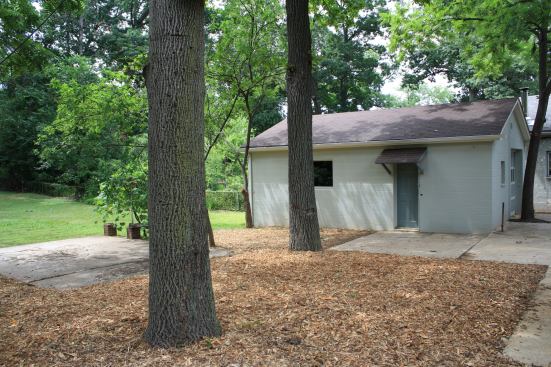Working in an established, high-end, inner-ring suburb of Washington, D.C., builder Jay Endelman successfully has weathered more than 30 years of economic ups and downs and always had another project on the horizon using his focused, one-house-at-a-time model. Founder and president of Guild Craft in Chevy Chase, Md., Endelman once had five employees and completed an average of three new construction or whole-house renovation projects each year. He’s now down to one full-time project supervisor, and they mostly take on smaller remodeling projects or additions to keep busy. Like with many other small builders, however, this continued economic downturn meant moving out of his comfort zone to balance the books.
Infill spec remodel is how Endelman describes the project that brought his business well into the black. Within six months, he identified an upwardly trending neighborhood, lined up private investors, committed personal funds, bought a distressed, uninhabitable property in a competitive market, completely renovated the house and yard, and sold it for considerable profit. It was a big risk that paid off. “There is certainly a higher level of anxiety with spec building and you don’t get to truly produce a unique space as with custom work,” Endelman admits, “but there’s also the satisfaction of being able to create a more modest house that still stands out from the rest and enhances the immediate community.”
Endelman made several fast but smart business and design decisions to make this project successful. “Despite the headlines, inventory of distressed houses in this area is very low and interest from builders is high, so you have to be ready to move,” he explains. The first step was finding a community that maintained a “strong pulse even since the housing bubble burst.” Endelman chose to bid on a single-family house in Hyattsville, Md., because it has many desirable traits–easily accessible public transportation, convenient routes into the city, and large development or mixed-use projects in progress. He had already lined up private investors and committed personal funds because banks and other lenders remain a hard sell despite factors like interest rates being favorable for home ownership. Once the financing and location were set, finding a house and entering the bidding process began. “Financing had to be pre-arranged so I could act quickly,” he says. “No contingencies or inspections are allowed on this type of sale. Most people would spend more time considering buying a pair of pants!”
Selecting the right property to buy is crucial despite the fast choices. Endelman looked for a special quality either already existing in the property or for the chance to create one. This house ended up having both. “Whether it’s something I design and build or a feature inherent to the project that I simply highlight, each of my houses has something to make it stand out.” The single-story bungalow Endelman purchased has a full basement and detached masonry garage, which are both nice selling points. He knew this was the house he wanted to buy, however, the moment he saw the backyard. The house sits on a half-acre lot with most of that space stretching out behind it. The backyard is well over twice the size of typical yards in the neighborhood. Endelman used the garage to frame the space and re-worked landscaping to generate a large, luxurious, and inviting outdoor area.
The oversized yard gave Endelman an existing stand-out feature and also inspired his added “wow” factor. While planning changes for the structure, the builder realized that the interior spaces needed to be opened up to create a better connection to the yard. “The stairway to the lower level was at the back of the house and blocked any views to the yard,” he explains. “To avoid rebuilding the entire exterior wall, I put an interior window in the kitchen and opened the stair landing to generate sightlines out and bring daylight in. It was an inexpensive solution that adds a huge value to the space.”
The rest of the renovation included taking much of the house down to its bones and replacing nearly everything with higher-end, efficient, and durable materials or products; installing all new windows; completely gutting and rebuilding the kitchen; and upgrading all other spaces. Endelman finished the exterior of the house and garage in various shades of blue for added appeal. “It creates interest but still comes across as a neutral,” he says.
Turning this eyesore into a well-designed, modest house with several custom touches gave Endelman worthwhile and profitable work to do. The project–after 45 nail-biting days on the market–let the builder sleep better at night knowing he can keep his trusted supervisor employed and his bills paid. Endelman also sees his efforts to transform the uninhabitable house into a desirable home as a way to give back to the community. And despite the anxieties of flipping a distressed property using private and personal funding, the rewards were enough that he’s already looking to bid on his next infill spec project.








